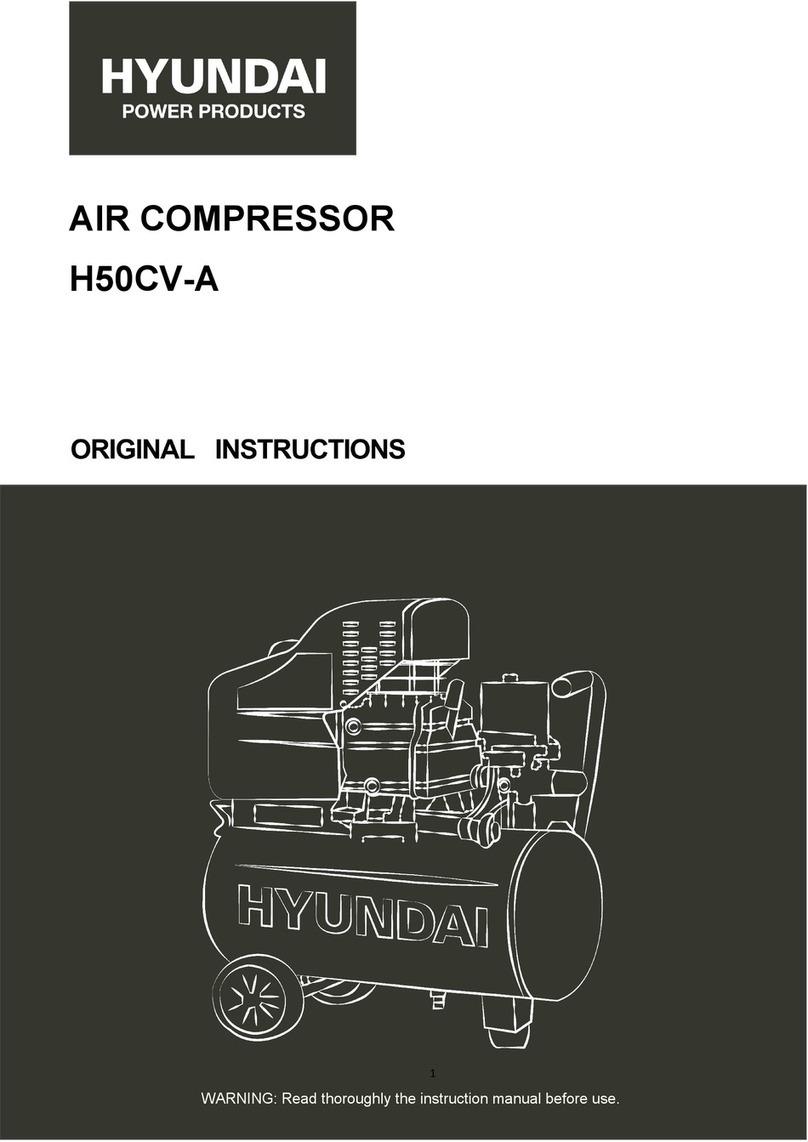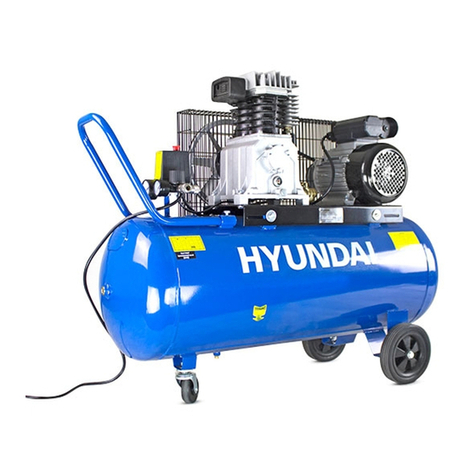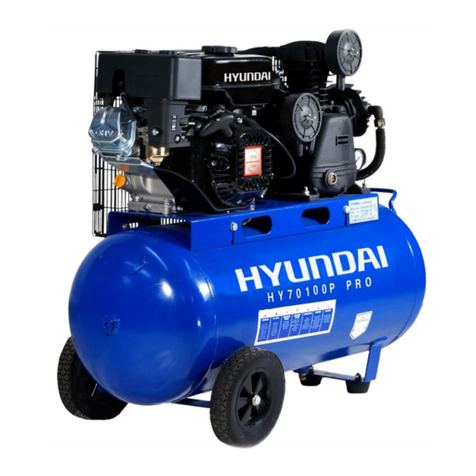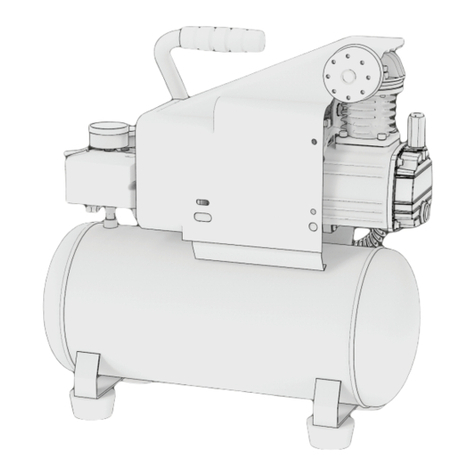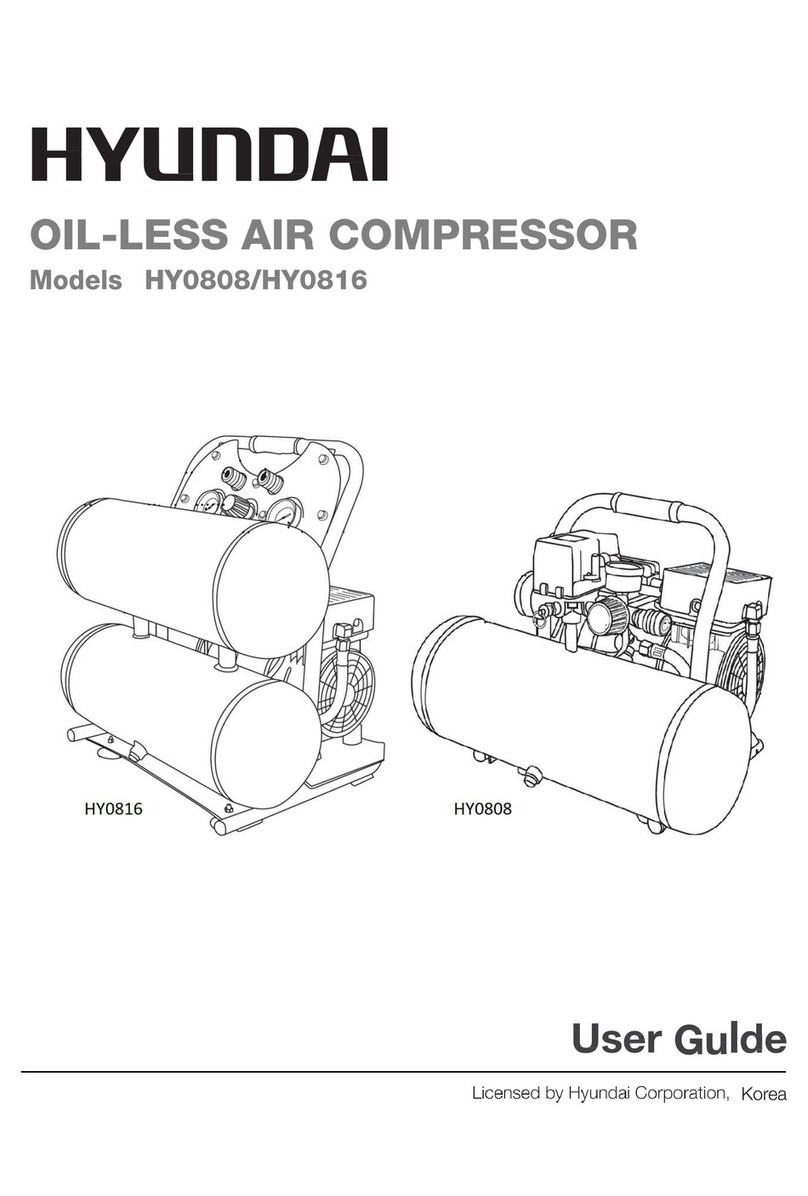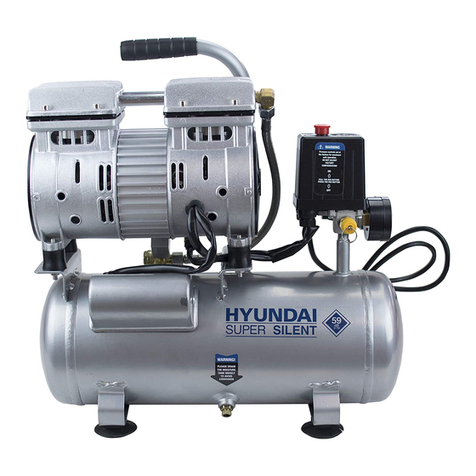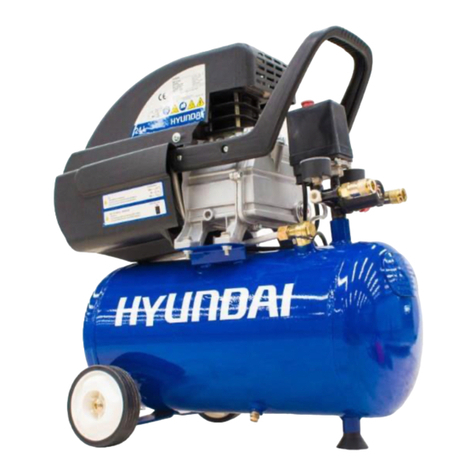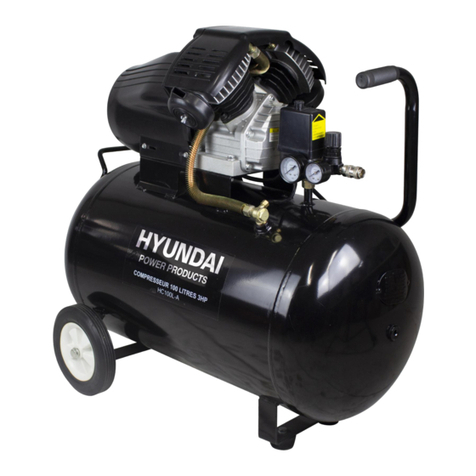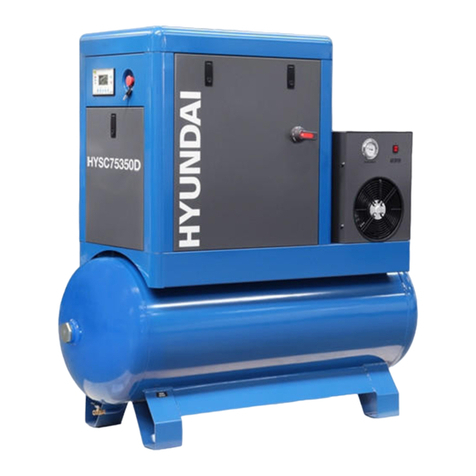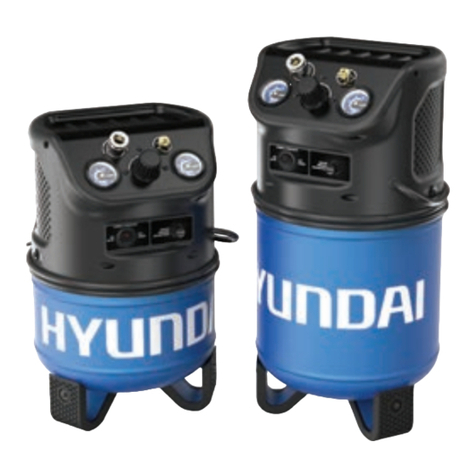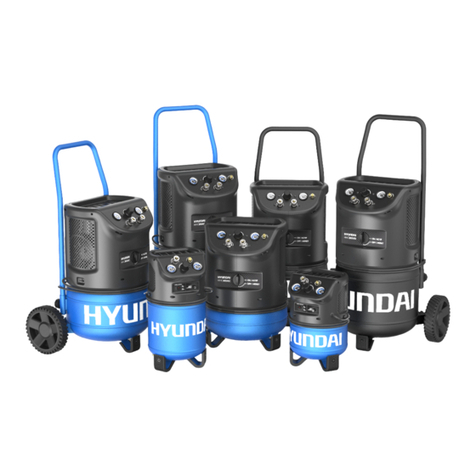
Avoid using the compressor at temperatures below +5 degrees.
Never leave the compressor unsupervised while ills in use.
Ensure that the ON/OFF switch is turned off when connecting to the mains powersupply.
Caution! Operate the compressor only for a short time. The appliance may overheat if operated
continuously for longer than 10 minutes. Switch the appliance off immediately and allow it to cool down
for at least 10 minutes.
Risk of injury! Do not pump any objects up to more than the intended pressure. They could burst and
cause injury and/or material damage.
Do not exceed the permissible output range of the compressor. Do not pump up any lorry, tractor or
other large tires.
Do not work with any materials that are or could be easily inflammable orexplosive.
Never use the appliance for purposes other than the ones for which it wasdesigned.
The appliance must always be kept clean, dry and free from oil orgrease.
Never use gasoline or other inflammable liquids to clean the unit! Vapours remaining in the appliance
could be ignited by sparks and lead to the explosion of theappliance!
Remain alert at all times! Never use the appliance when you are distracted or don’t feel well.
Safety instructions for working with compressed air and blow-out guns
The compressor and hoses can get very hot during operation. Touching them can causeburns.
The gases or vapours sucked in by the compressor intake must be kept free of admixtures that could
lead to fires or explosions inside the compressor.
When removing the hose coupling, always hold the hose coupling firmly to avoid injury caused by the
hose flying off.
When working with the blow-out gun, wear goggles. Foreign bodies and blown out particles can easily
cause injuries.
Do not direct the blow-out gun at people or use it to clean clothing you arewearing.
Check all connections and supply lines. All maintenance units, couplings and hoses must correspond to
the appliance parameters in terms of pressure and air flow. Excessively low pressure will adversely
affect the function of the appliance; excessively high pressure can cause property damage and personal
injury. Protect the hoses against kinking, constriction, solvents and sharpedges.
Ensure that the hose clamps are always tight. Loose or damaged hose clamps can allow air to escape
in an uncontrolled manner.
Replace a damaged hose immediately. A faulty supply line can cause a compressed-air hose to thrash
about and cause personal injury.
Do not breathe in the exhaust air directly. The hose must be designed for at least 150% of the maximum
pressure generated in the system.
The tool and the supply hose must be fitted with a hose coupling that allows the pressure of the coupling
hose to be dispersed completely during disconnection.
WARNING! An undersized compressed air system will reduce the efficiency of yourappliance.
Avoid getting exhaust air in your eyes. The exhaust air from the appliance may contain water, oil, metal
particles or impurities from the compressor. This can cause damage to health.

